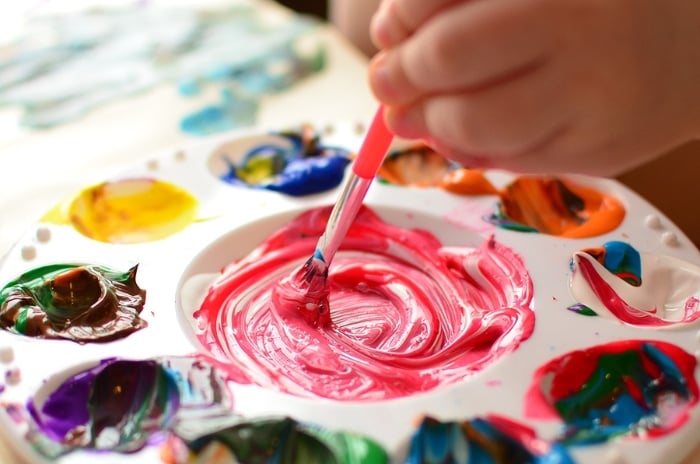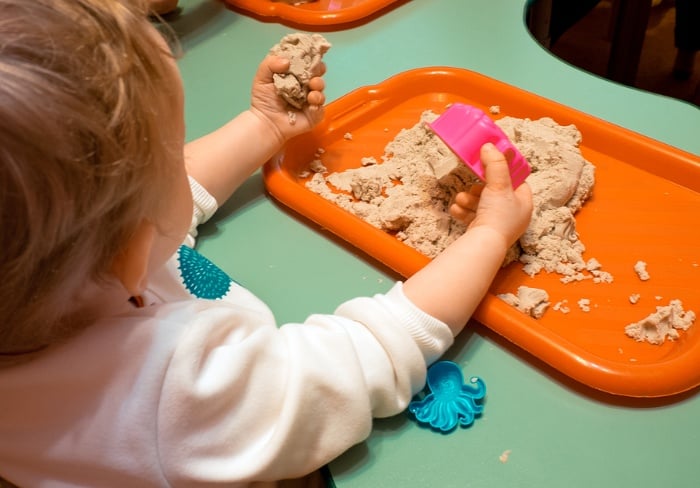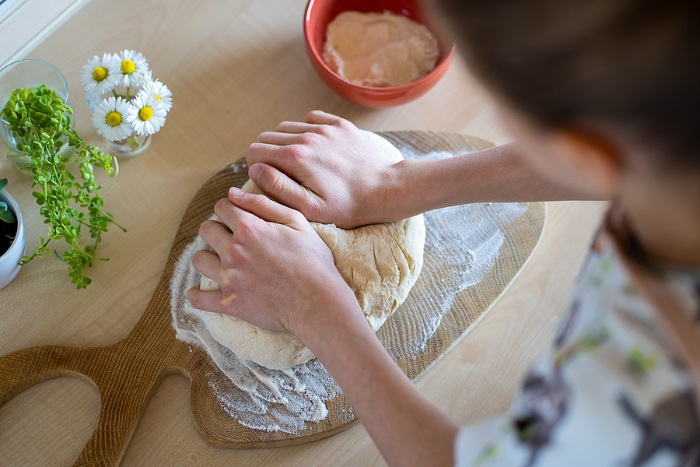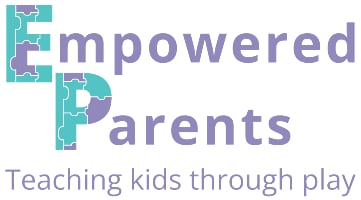Teaching science concepts in early childhood should be interactive and fun. Kids are never too young for exposure to the wonders of the natural and physical world that surround them.
Let’s take a look at some ways children can experience and experiment, as they take part in science through play!
What are Science Concepts?
Science is about observing, making predictions, testing those predictions, and trying to figure out what those results mean.
You can teach many basic science concepts to young children at their level of understanding.
- The concept of organization, for example, can be learned through the process of sorting natural items, like leaves, by their characteristics.
- Kids can experience cause and effect by starting bean plants from seeds, watering them and making sunlight available to help them grow.
- With children, you can explore the concept of scale by using tools to compare, measure and weigh.
- Explore the idea of change with water that freezes and then melts.
- The act of arranging or sorting objects by colour or type helps young kids learn about the concepts of variation and diversity.
- Through observation, children learn about structure and function, the links between how things look or act and what they do, such as tape holding paper together because it is sticky.
[source]
“Science” should not be a scary word for young kids!
Show kids that science is about “the way things work” and can constantly be found all around us.
How Do You Teach Science in a Fun Way?
Stay alert for opportunities throughout the day. Point out and discuss the weather, growing things, colours, temperatures, animals, sizes, sounds, smells and sights in children’s environment.
Beyond these kinds of events that happen naturally, try to plan other “scientific” opportunities through play, experiments and discovery.
Here are some awesome ways to teach preschool science concepts:
6 Play-Based Preschool Science Activities
Almost any game, project, or event you plan for your children probably includes an aspect related to science. You can decide whether to focus on that as a science learning moment.
For example, if kids are painting, you can talk about red and blue making purple. Once they get the idea of “finding science” everywhere, they often start to notice it on their own.

1. Water Play
Playing in the water can take place in a bathtub, water table, swimming pool, lake or kitchen sink.
By using a variety of containers and tools to scoop, pour, splash, measure, make waves, and mix, children experience the physics of motion and flow, the chemistry of solutions, and the scale related to measurement.
Sink or float is a great water activity that only requires a basin or tub of water, along with various small objects, including ice cubes.
Children can predict, one item at a time, whether they expect them to sink toward the bottom of the container or float on the top.
Through this simple activity, they explore the physics concepts of buoyancy and density.
Kids also can learn about water displacement while playing in the water.
Ask them to add objects, such as stones, one at a time to a container of water, noting how the level rises as more objects are added. Challenge them to determine why that happens.
Here are some fun, simple water experiments for kids.
2. Sand Play
Kids can play in the sand with a sand table, tub of sand, sand box, or at the beach.
Offer various non-breakable containers and tools for them to dig, dump, pour, scoop, funnel, measure and mix.

Offer magnifying glasses so children can observe, up close, what sand is composed of and how it looks.
With a combination of sand and water, children can design sandcastles, dig moats and build dams.
What happens as more water is added to the mixture? What are the results as more dry sand is then added?
Sifting is a fun experiment that makes use of sand and other ingredients. Gather a sifter or strainer and a plastic bowl, along with sand, salt, rice and other similar materials.
Challenge kids to predict which of those might pass through the holes in the sifter and which ones could get caught. Observe the results and have children conclude why that happens.
Here’s a list of fun sand play activities for kids.
3. Mud Play
By adding water to sand, kids form a delightful concoction of mud. Using a variety of tools and containers, they scoop, dig, measure, dump, pour and mix.
What happens when more dry sand is added to the mixture? Does it hold together for mud patties? Why? What are the results with more water added to the mud?
4. Kitchen Science
Anytime you are mixing dry and wet ingredients together in the kitchen, invite your kids to observe or wash their hands and take part. What is happening and why?
With the help of various cooking tools and appliances, foods change form and become something edible. What makes this happen?
Great discussions related to solid and liquid forms of matter can begin in the kitchen.
Try a simple taste test with your kids. Blindfold children and have them sample various foods.
Challenge them to categorize the foods as sweet, salty, sour, soft, and crunchy, along with guessing each of the foods tasted.
Also, have them try a taste test with their noses pinched closed. By attempting this, they learn more about how the body works and how the senses function as a team.
Recipes for making bread in a bag are easily found on the internet. They typically require a zipper-type bag, sugar, flour, yeast and water, to be shaken and mixed.
This is the “proofing,” when the combined ingredients begin to form bubbles. More flour, salt, and melted butter are then added to the bag for further mixing.
After removing it from the bag, you can show your kids how to knead the dough on a floured surface. Then let it set to rise before baking.

Through this activity, kids observe the ingredients changing from dry to wet and can learn how yeast and sugar make bubbles to help the bread rise.
Making butter in a jar is a fun activity that requires only a covered jar and heavy (whipping) cream.
Fill the jar partly full of cream and replace the lid. Holding with both hands, the children then shake.
Every so often, have them stop to open the jar and observe the ball of butter that is starting to form. Simply put, the fat cells in the cream stick together when shaken and form the butter.
When progress seems to have stopped, the butter can be removed to spread on bread or crackers.
Talk about how this butter tastes different because it doesn’t yet have salt, which is added to most butter bought at the store.
The liquid that is left in the jar is buttermilk and could be used in various recipes.
Here are more cooking activities to involve young kids in.
5. Garden Science
Green bean seeds are easy to handle and germinate quickly, making them a good choice as a gardening experience for preschoolers.
Although they can be started right outdoors in the garden, kids can observe more closely if you start them indoors in little cups of soil.
They press them into the soil, water them sparingly, and give them sunlight for at least part of each day. Before long, little green sprouts appear!

Guide your kids in exploring a bit with their plants. Dig one of the plants out of the dirt with a spoon to see how the seed is cracked open and the plant is growing from that opening.
Experiment with water and sunlight, as well. Have separate trays/box lids that hold a few cups of plants, each. Stop watering one set and remove one set from the sunlight. What happens?
When the plants are a few inches tall and the weather outside is warm enough, plant them in the garden in a spot that gets sunlight for at least part of the day.
Children can help water and pull weeds that attempt to grow around the plants.
Bush beans often need a support as they grow taller, and pole beans need a pole or trellis to climb.
Kids can observe the various coloured flowers that eventually appear, followed soon after by the green bean pods.
Try these simple gardening activities.
6. Animal Science
By having family pets and helping to care for them, many scientific facts are reinforced.
Pets need to eat, just like people. The vet might say a pet is under or overweight, and this could affect what foods the pets are given.
Pets need to drink water, the same as people. Children can be given the responsibility to fill water dishes by pouring from a filled plastic container.
They can also help to groom animals with brushes, being careful to avoid the eye areas. Talk about how people groom themselves, too.
Challenge your kids to hear their pets’ hearts beating when resting together on a pillow. They have hearts just like people!
Remind children to use all their senses when exploring science.
What do they see, hear, smell, taste, feel through touch, and sense in the space all around them? The answers are all related to science!
I hope you’ve enjoyed reading about science concepts for kids.

